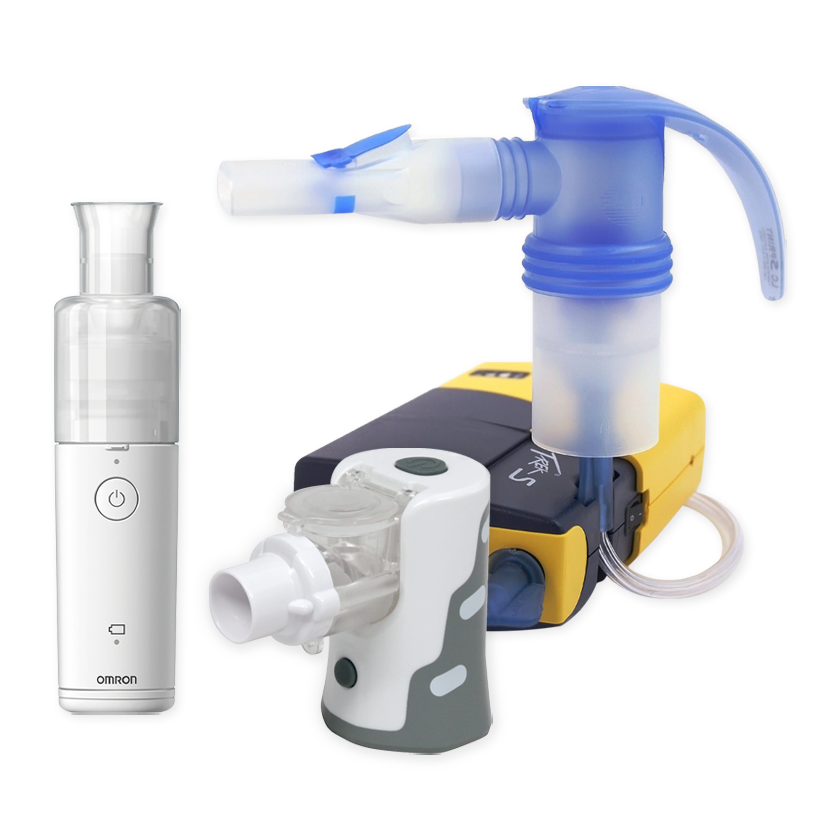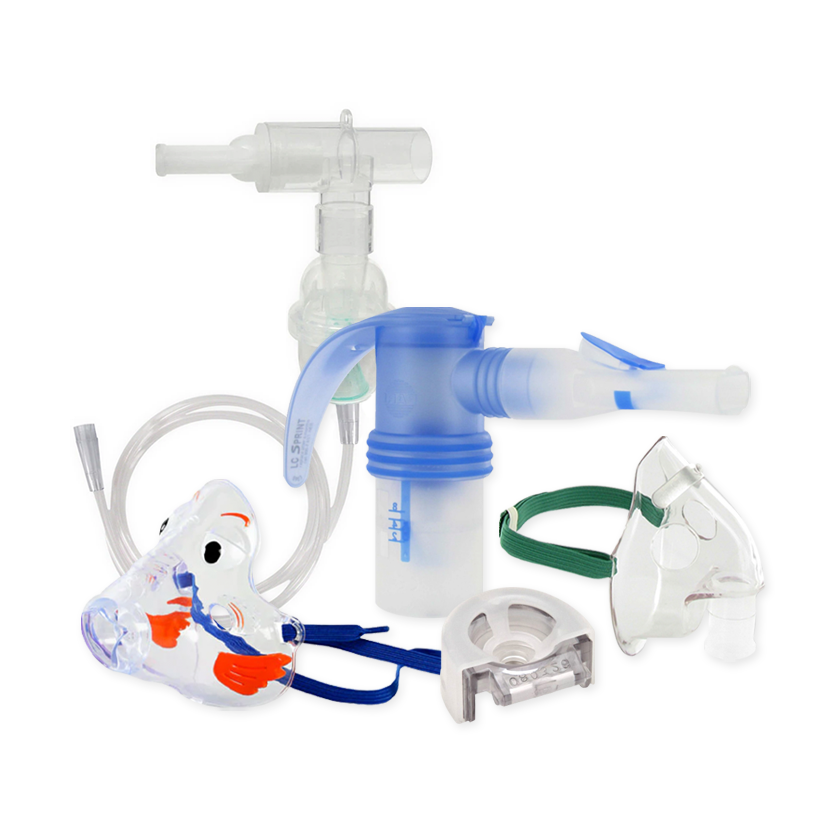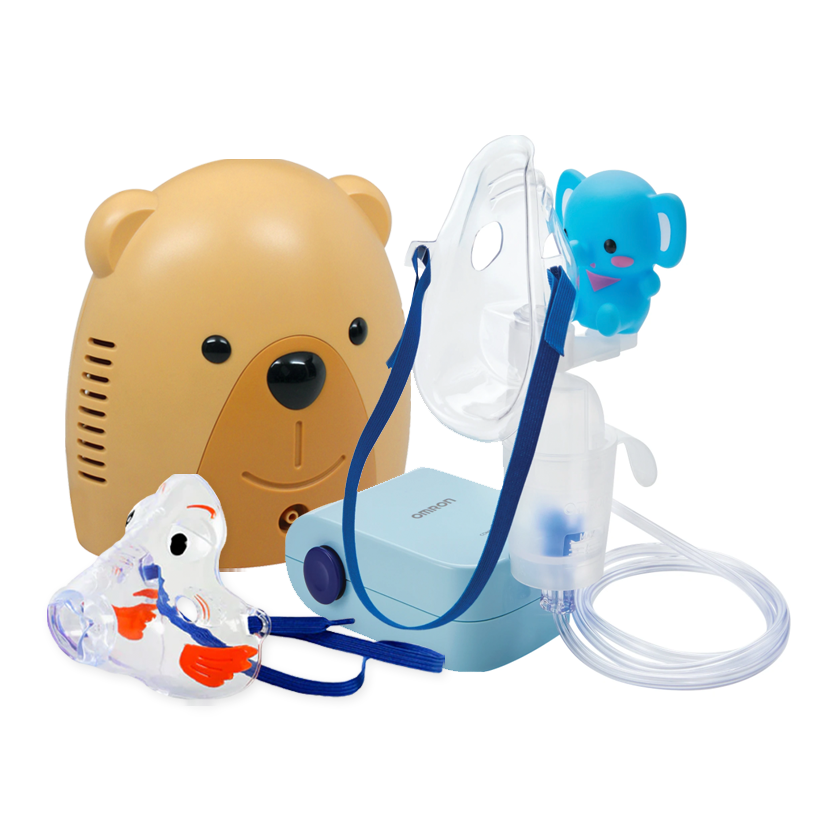Your Cart is Empty
Tips & Advice - Asthma in Pets

How Do I Know if My Pet Needs a Nebulizer? >>
Choosing a Nebulizer for Your Pet >>
How Do I Use a Nebulizer >>
How Do I Give a Nebulizer Treatment to My Pet? >>
How Can I Get My Pet to Go Along with Treatments? >>
What Should I Do if My Pet is Having an Asthma Attack? >>
Pet Asthma Resources & Links >>

How Do I Know if My Pet Needs a Nebulizer?
Unlike humans, animals cannot speak up to tell you when they need help. And since the onset of canine and feline asthma typically comes later in life, it can be difficult to determine the difference between a harmless hairball and a greater issue. If your dog or cat exhibits any of the following symptoms, call your vet immediately – your pet may have a more serious respiratory problem that can be treated with a nebulizer.
- Coughing and wheezing
- Persistent cough
- Pale, bluish lips and gums
- Labored breathing
- Weakness and lethargy
- Lack of appetite
- Weight loss

Choosing a Nebulizer for Your Pet
Just like humans, cats, dogs, and other pets can develop respiratory illnesses that require inhaled medication. To provide relief for conditions like asthma and pneumonia, your veterinarian may prescribe the use of a nebulizer – a device that changes medication from a liquid to a mist so that it can readily be inhaled into the lungs. Because they administer the medication slowly and directly into the lungs (unlike oral medications, which need to be digested before they can enter the bloodstream) nebulizer treatments are typically the most effective way to provide relief for respiratory ailments.
Most nebulizers fall into one of two categories – home (tabletop) or portable. Home nebulizers, like the Omron CompAir Elite, must be plugged into an electrical outlet, and are generally larger and bulkier; they are also less expensive than portable nebulizers.
Portable nebulizers run on disposable or rechargeable batteries, and many fit in the palm of your hand. You might be paying a little bit more, but in return, you can easily slip your nebulizer in your bag or purse – great in case of emergencies during walks!

How Do I Use a Nebulizer?
Despite their elaborate appearance, nebulizers are simple to use. Just follow these steps:
- Insert one end of the tubing into the compressor and the other end into the medicine cup.
- Fill the medicine cup with the correct dose of medicine.
- Turn on the compressor.
- After 5 to 10 minutes, the medicine will run out. You will be able to tell because the flow of aerosolized medication will slow down, and eventually stop.
- Shake the medicine cup a few times to make sure there’s no more medication in it.
- Take apart the nebulizer and wash its parts.

How Do I Give a Nebulizer Treatment to My Pet?
Treating an animal with a nebulizer can be a somewhat involved process, and should not be attempted without the recommendation and support of your veterinarian. Depending on your pet’s personality and the severity of their condition, your vet may recommend one of several methods of administering the nebulized medication:
- Place a towel or cover over a cage (for larger pets) or aquarium (for smaller pets such as rats or guinea pigs), and place the nebulizer inside the cage to create an aerosol chamber. This method is good for skittish or hyperactive pets that may otherwise be unable to sit still through their nebulizer treatment.
- Shut your pet in a small room, such as a bathroom or closet, and turn on the nebulizer. Your pet can then breathe in the soothing, medicated air passively, calming them down and assuring a hassle-free treatment. Pet owners who wish to get the most for their money may not find this option ideal, since some of the medication is inevitably lost to the surrounding air.
- Hold the nebulizer mouthpiece close to your pet’s nose and mouth. While some of the medication is bound to be lost to the surrounding air, your pet will be able to inhale some of the medication in this manner.
- Place a soft pediatric mask over your pet’s face before administering the nebulizer treatment. This is by far the most effective option, as it minimizes wasted medication and directs the nebulized particles straight into the lungs. However, if your pet has difficulty staying still for the duration of the treatment, this may not be your best bet.

How Can I Get My Pet to Go Along with Treatments?
Unless you speak dog or cat, you won’t be able to verbally communicate with your pet to explain why you’re treating them with this strange-looking machine. The trick to reducing resistance during nebulizer treatments is to establish a routine, and reward good behavior. Here are some tips for making the process go smoother:
- Be positive about nebulizer treatments. Speak in a soothing voice, and offer a few reassuring pats on the head (not too many, though – you don’t want to over-stimulate them).
- Try to stick to a regular schedule so your pet gets used to treatments. Scheduling your pet’s treatments for the same time (like after a meal or walk) will help them become accustomed to nebulization as just another part of their daily routine.
- Put a little canned dog/cat food, cream cheese, or peanut butter on the inside portion of the mask and allow your pet to lick it. This will help to distract them until their treatment is complete.
- Reward good behavior with a treat or a special toy. This helps to reinforce the positivity of the experience, and encourage compliance.

What Should I Do if My Pet is Having an Asthma Attack?
If you suspect that your pet is having an asthma attack, it’s essential that you get them to the vet as soon as possible. However, if the vet’s office is closed, or if you live in secluded area, you may need to take action on your own:
- Examine your surroundings. Is there smoke in the air, or have the walls recently been painted? Are there high levels of dust or household chemicals present? In order to treat an asthma attack, you must get the pet away from what may be triggering his/her attack, to an area that is cool, quiet, and free from distractions (which may speed up breathing and prolong his/her attack).
- Make sure the room is well ventilated with moist air, as dry air will only make symptoms worse. If you have a humidifier or vaporizer, increase the humidity levels in the room to 30 or 40 percent. Turn on a fan or open windows.
- If your pet’s symptoms do not improve, you’ll need to transport them to the nearest veterinary emergency room as soon as possible.
- If your cat or dog stops breathing, you’ll need to administer artificial respiration:
- Lay the animal on his/her right side.
- Pull the tongue out to the front of the mouth, so that you can close the mouth without the tongue getting in the way.
- Check for foreign particles in the airway and clear the airway.
- Put your mouth near the animal’s nose and slowly blow into the nostrils until you see their chest rise. If the chest does not rise, use more force and close your hand around the muzzle to prevent air from escaping from the mouth.
- Stop blowing and allow the lungs to deflate.
- Repeat steps 4 and 5 every three seconds until your pet starts to breathe again.






